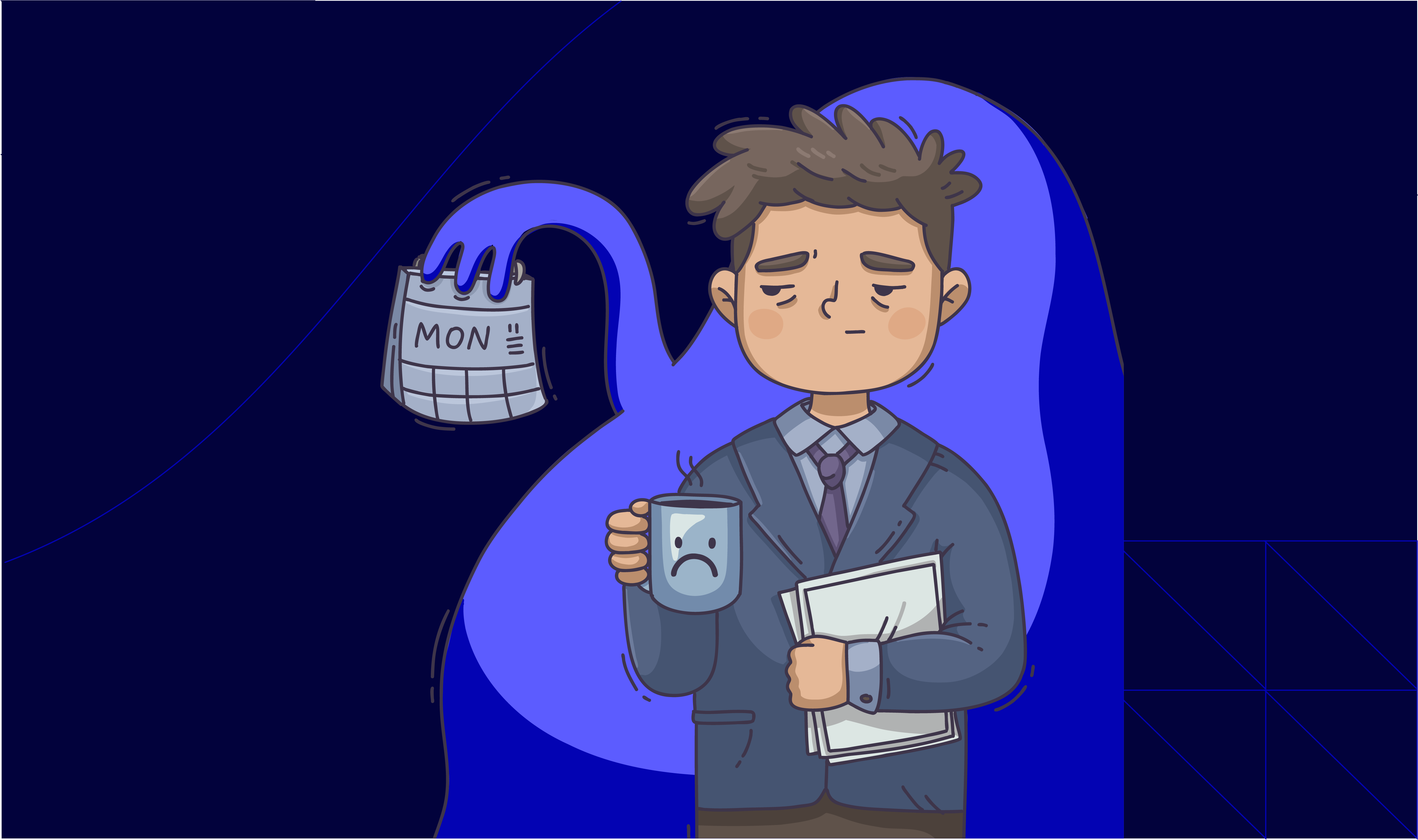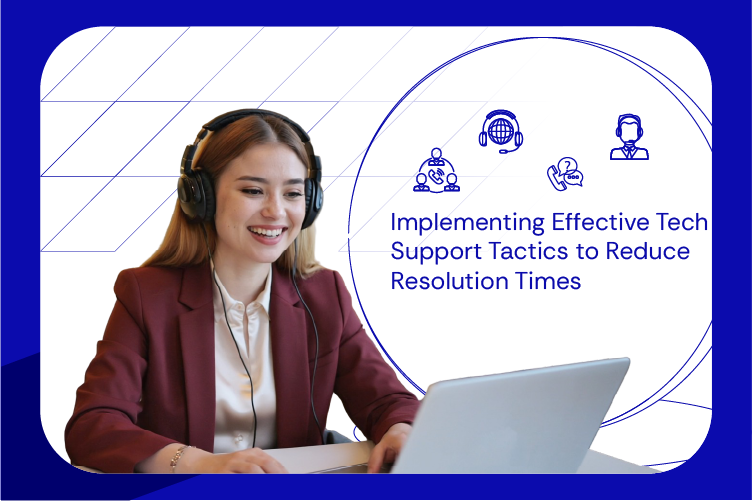Resolution time is the total duration it takes from when a customer submits a support request to when their issue is 100% resolved. For growing consumer brands and D2C companies across the US, UK & Australia, optimizing this metric is important for scaling without sacrificing service quality. To become an easy tech company, you should try to reduce resolution time by automating repetitive tasks, using visual support tools, and routing tickets to the right agents (based on skill or workload).
Time is money! And in tech support, it’s customer loyalty too! Studies show that about 83% of customers feel more loyal to brands that quickly respond to and resolve their complaints. This insight matters most for CX leaders, especially VPs and Directors of Customer Experience, who are responsible for balancing efficiency with satisfaction.
Moreover, by merely lowering average email response time to under six hours, you can lift overall revenue by about 2%!
Thus, for an easy tech company, every minute spent resolving a support ticket matters! That’s because slow resolutions lead to:
- Frustrated users
- Overloaded support team
- Increased costs
At Atidiv, we’ve seen how automation and data-backed processes can change this. In one engagement, we helped an NYC startup achieve 80% time savings, 50% cost reduction and 99% accuracy. Read the full case study here.
So, what’s the solution? How can the resolution time be reduced? You can:
- Use automation
- Adopt a smart ticket routing system
- Set up a clear tiered structure
Additionally, you should try improving resolution time with visual support. Studies show that companies using visual support technology (such as live video or computer vision) have experienced an average 69% decrease in resolution time!
So, do you want to close tickets faster in 2025? Follow these seven proven tactics!
Become An Easy Tech Company in 2025! Reduce Resolution Times With These 7 Tactics

For many businesses, the average customer support resolution time is 17 hours. Have you achieved this benchmark yet? Below are seven tactics you can follow to significantly reduce your resolution times in 2025:
1. Automate Repetitive Tasks
To become an easy tech company, you can adopt “task automation”. In this technique, you use software or AI models to do routine jobs. This lets you reduce the headcount.
Usually, you implement automation in jobs that follow the same steps every time and don’t need decision-making. Some common examples are:
- Sending follow-up emails
- Updating ticket statuses
- Creating user accounts
- Resetting passwords
- Notifying staff when a new request comes in
In one real-world example, Atidiv’s automation solutions enabled a business aggregator to save over $20 million annually while managing high support volumes with 95%+ quality. Explore the case study.
Follow These Steps to Use Automation in Your Business:
- List routine tasks: Focus on jobs that take time and follow clear steps.
- Choose tools: Use software like helpdesk systems or workflow apps.
- Define the steps: Set what should trigger the task and what actions to take.
- Set up and test: Install the automation, test it, and adjust if needed.
2. Give Your Customers Self-Service Options
Self-service options are tools that let your customers solve common problems or complete tasks on their own. This avoids the need to contact your support team. Studies show that about 81% of customers want more self-service options from companies.
Main Self-Service Tools You Can Develop
| Self-Service Tools | Explanation |
| Self-Service Portals | A web page where customers can:
|
| Community Forums | A public space where customers can:
In this forum, your staff can also join the discussion to guide people. |
| Knowledge Base | It is a library of:
These items mainly cover common problems and questions. Customers can find answers by searching or browsing. |
| Automated Workflows | These are step-by-step forms or tools that guide customers through tasks, like:
|
5 Best Practices to Follow
To become an easy tech company, you can follow these five best practices while developing self-service tools:
- Simple and Clear Layout: Make sure the portal is easy to use on computers and phones.
- Keep Content Updated: Check and refresh your “help articles” regularly to match current features or questions.
- Add Strong Search: Make sure customers can find “help articles” by typing keywords.
- Use Customer Feedback: Collect suggestions and adjust the portal based on real user experience.
- Connect With Other Tools: Link your portal with your CRM or support software so information flows between systems.
Atidiv’s CX team recently helped a client reduce repetitive tickets and save $450K annually by integrating automated workflows into their self-service portal. View the case study.
3. Improving Resolution Time with Visual Support
Nowadays, most companies offer visual support to their customers. This means using:
- Video calls
- Screen sharing
- Image based guidance
Instead of just talking or chatting, customers and agents can show each other what they are seeing. If the customer shares a video, photo, or starts a video call, the agent can see the issue directly.
This makes it easier to understand the issue, which significantly reduces the resolution time. Recent studies show that businesses using visual support have seen their average resolution times drop by 46%. Also, visual engagement tools can:
For D2C companies managing high support volumes, integrating visual support reduces escalations, improves accuracy and enhances customer satisfaction.
4. Automate Your Ticket Routing
Ticket routing is the process of deciding who should handle each customer request. Most easy tech companies have automated this process, which means the system does this on its own based on rules you set.
Let’s Understand How It Works:
The system reads each support ticket. It specifically looks at the:
- Topic
- Urgency
- Customer type
Then it sends the ticket to the right person or team. Usually, routing is based on these parameters:
| Routing Parameters | Meaning |
| Department | IT tickets go to IT. Sales questions go to Sales. |
| Urgency | Critical problems go to the senior staff. |
| Workload | Send tickets to the person with the fewest open tasks. |
| Skills | Technical issues go to the tech staff. Billing issues go to finance. |
How Does This Approach Reduce Resolution Times?
Due to automation, tickets reach the right person without delay. As a result, your staff don’t get overloaded. Moreover, your business can handle more tickets without adding more people.
If we talk about a real-world example, the company Mercari uses automated ticket routing systems. Recently, it solved 75% of support tickets without staff. The organisation could cut down on errors and free its employees to focus on harder work.
Atidiv’s AI-driven ticket routing tools have helped clients reduce average handling times by 30% while improving customer satisfaction across global CX teams.
5. Start Offering Remote Support, Wherever Possible!
To become an easy tech company, you can start offering remote technical support. This can be done by using software that lets your support staff or IT technician resolve problems on a customer’s computer or phone (from another location). The technician does not need to visit the customer in person.
Let’s See How It Works:
- Remote Access:
- The technician connects to the customer’s device using secure software.
- This can happen:
- On-demand: The customer permits a support session.
- Unattended: The technician connects without the customer being there (usually for scheduled tasks or maintenance).
- Control and Troubleshooting
-
-
- After connection, the technician can:
- See the customer’s screen
- Move the mouse and type
- Fix software problems
- Install updates
- Change settings
- Transfer files
- After connection, the technician can:
-
- Communication
-
- The software often includes chat, voice, or video.
- This lets the technician talk with the customer during the session.
The Benefits
Your technicians can resolve the issues without travelling. This significantly reduces the resolution times and delays. Additionally, it improves productivity as:
- One technician can support more customers in a day because they aren’t spending time driving or setting up in person.
- Your team can provide support across different time zones or during off-hours.
By adopting remote support, one Atidiv client increased technician productivity by 40% while maintaining high-quality service across time zones.
6. Optimise Your Staffing Levels
Make sure you have the right number of support staff –
- Too few agents mean customers wait too long
- Too many agents increase costs
Thus, your goal should be to match staffing levels with customer demand. Below are some key actions you can take to achieve the right balance:
Key Actions To Strike the Right Staff Balance
- Plan Using Data
-
- Look at past trends (such as call volume during holidays or product launches)
- This will let you predict “busy times”.
- Now, use this data to schedule more agents during those periods.
- Use Flexible Staffing
-
-
- Hire part-time or remote workers.
- Keep a list of on-call agents who can help during sudden spikes in volume.
- This way, you don’t have to pay for full-time staff you don’t always need.
-
- Use Scheduling Tools
-
- You should use workforce management software.
- It can let you:
- Create staff schedules
- Monitor real-time activity
- Adjust shifts based on actual demand
- This allows you to spread the workload and avoid burnout.
For scaling consumer brands, matching staffing to peak hours ensures customers never wait while costs stay under control.
7. Use a Tiered Support Structure
A tiered support system breaks your team into levels. Each level handles problems based on how complex they are. Generally, easy tech companies follow a three-tier structure. Let’s see how it looks:
| Tier 1: Basic Support | Tier 2: Intermediate Support | Tier 3: Expert Support |
|
or
|
|
How Does It Work?
- A customer contacts support.
- Tier 1 tries to solve the issue.
- If they can’t resolve it, the issue moves to Tier 2.
- If Tier 2 cannot solve it, it goes to Tier 3.
In this setup, simple problems get resolved quickly by Tier 1. Whereas complex problems go to people trained to handle them. This approach significantly reduces the resolution times.
Some Other Benefits
- You don’t need high-paid staff to answer basic questions. You use experienced agents only when needed.
- As your business grows, you can add agents to the right tier based on what kind of help is needed most.
- Each team knows what problems they are responsible for. This reduces confusion and minimises resolution times.
- Customers get the right help from the right person. This improves satisfaction and resolution quality.
Atidiv’s multi-tier CX frameworks are designed to handle volume surges while maintaining 95%+ quality benchmarks. Read how.
Don’t Fight Resolution Delays Alone! Hire Atidiv in 2025

Be aware that long wait times and slow problem-solving raise support costs and frustrate users. Usually, it leads to a drop in revenue. In 2025, easy tech companies can reduce their resolution times by using:
- Automation
- Visual support
- Smart ticket routing
- Remote tools
- Tiered teams
This allows your customer support department to handle more tickets and improve service quality.
Atidiv partners with CX leaders across the US, UK & Australia to optimize customer operations using AI-driven support systems, omnichannel communication and measurable outcomes.
Did you know? About 90% of customers rate an “immediate” response as important or very important when they have a customer service question. And, 60% of people who needed support defined “immediate” as 10 minutes or less!
So, do you have the right people and technology to beat this benchmark? Don’t take your customers for granted! Outsource your customer support to a CX specialist like Atidiv! We use AI technology to automate tasks and provide 24/7 chatbots.
If your team struggles to meet that benchmark, Atidiv can help you modernize your support operations. Our solutions deliver measurable ROI and faster resolutions across channels.
Our expert team offers:
- Omnichannel messaging solutions
- Inbound and outbound call center services
- Voice customer care
- Live chat service for website
- Social media support
Ready to reduce resolution time and scale efficiently? Get in touch with Atidiv today.
FAQs On Easy Tech Company
1. Why are my support tickets taking so long to close?
Long resolution times usually happen when:
- Your tickets are assigned to the wrong agents
- Customer issues require repeated clarifications
- Your customer support agents are dealing with basic tasks that should be automated.
Without tools like visual support or smart routing, your team wastes time on avoidable back-and-forth. Implementing automated workflows and AI routing can reduce ticket backlog by up to 40%.
2. Do I need to hire more support agents to reduce resolution time?
It’s not necessary! To become an easy tech company, you can reduce resolution times by using:
- Automation
- Visual tools
- Smart workflows
These tactics reduce ticket volume and improve agent productivity. Instead of hiring more people, you should optimise how your current team works. By improving workflow design and automation, companies can achieve faster resolutions with existing teams.
3. How can I resolve repeat issues that slow down support?
The best way is to create a comprehensive knowledge base and self-service tools. This lets your customers solve common issues on their own.
To gain the most,
- Analyse data to find repeated questions
- Build clear guides to address them
4. How can I make sure tickets go to the right person?
You can use automated ticket routing. Set rules based on:
- Topic
- Urgency
- Skills
This lets your tickets land with the right team member. Such an approach avoids delays and reduces resolution times. This ensures your customers get accurate responses faster and your teams stay focused on high-value tasks.

